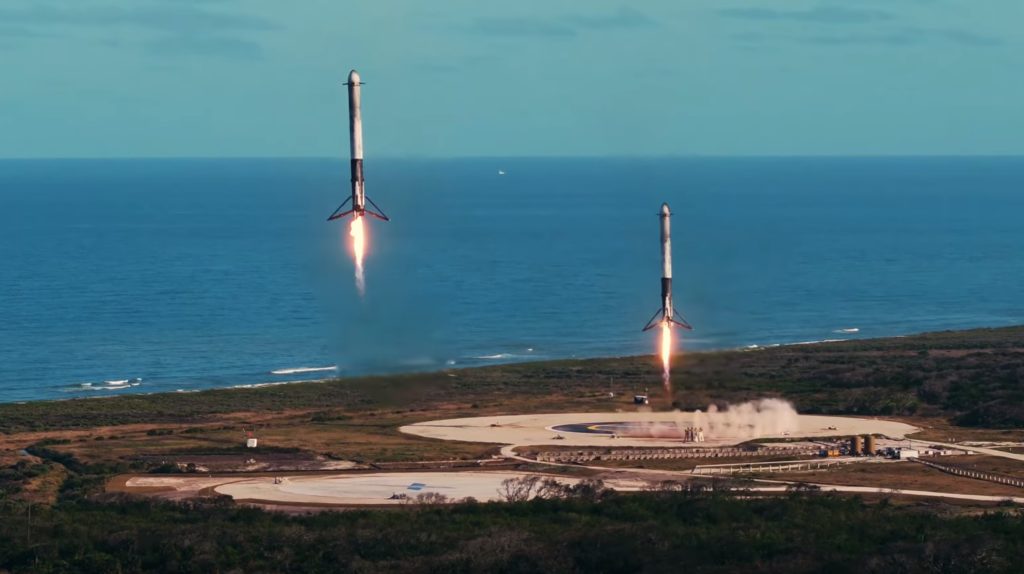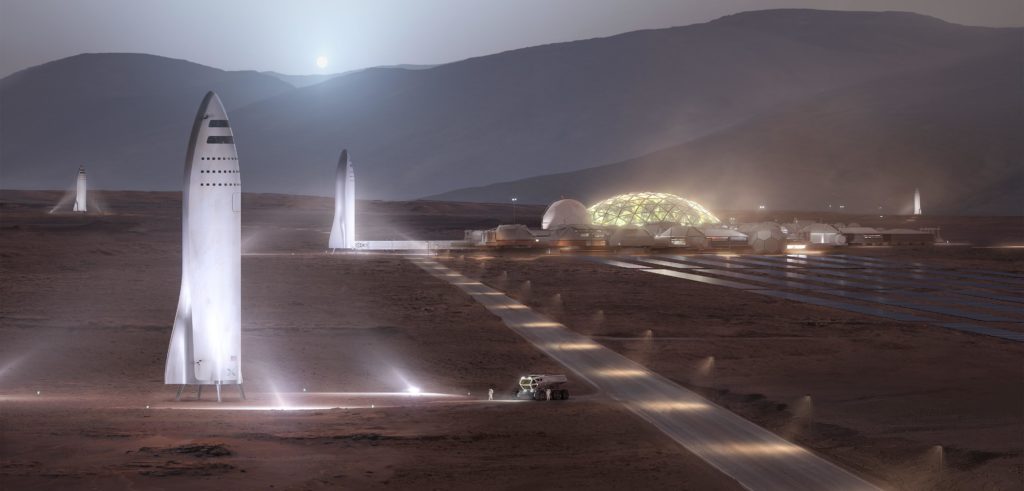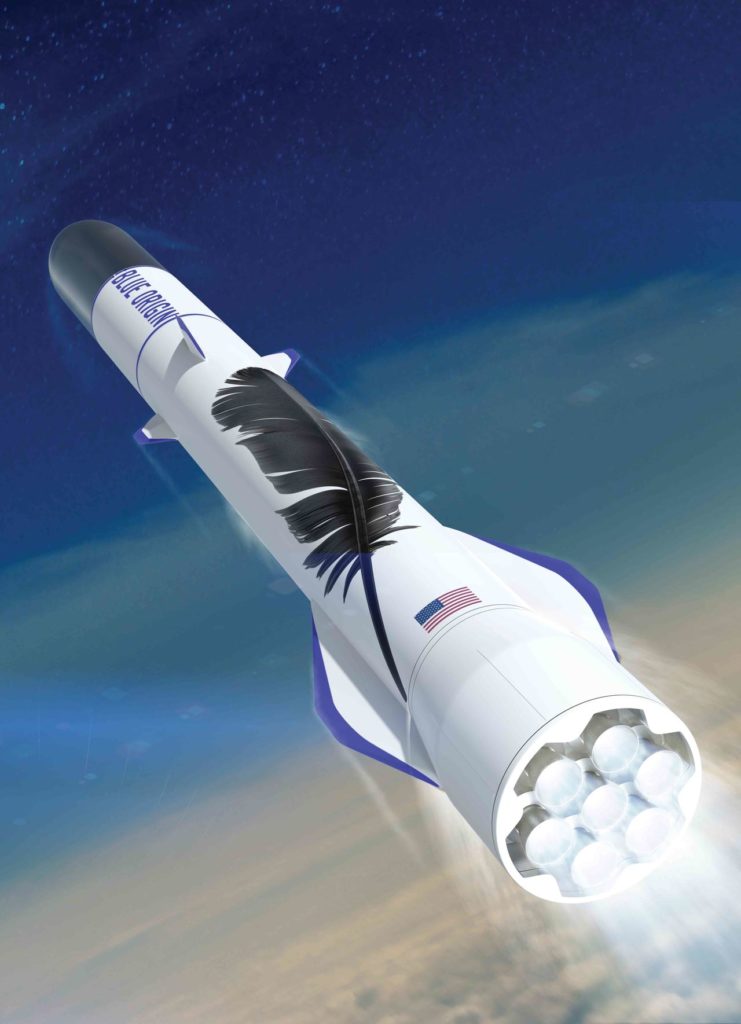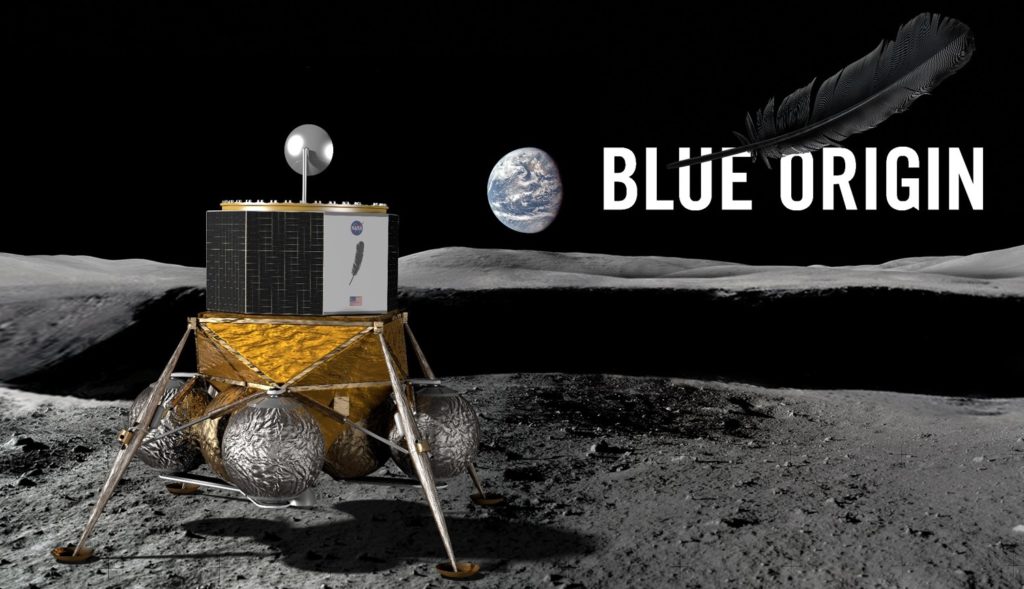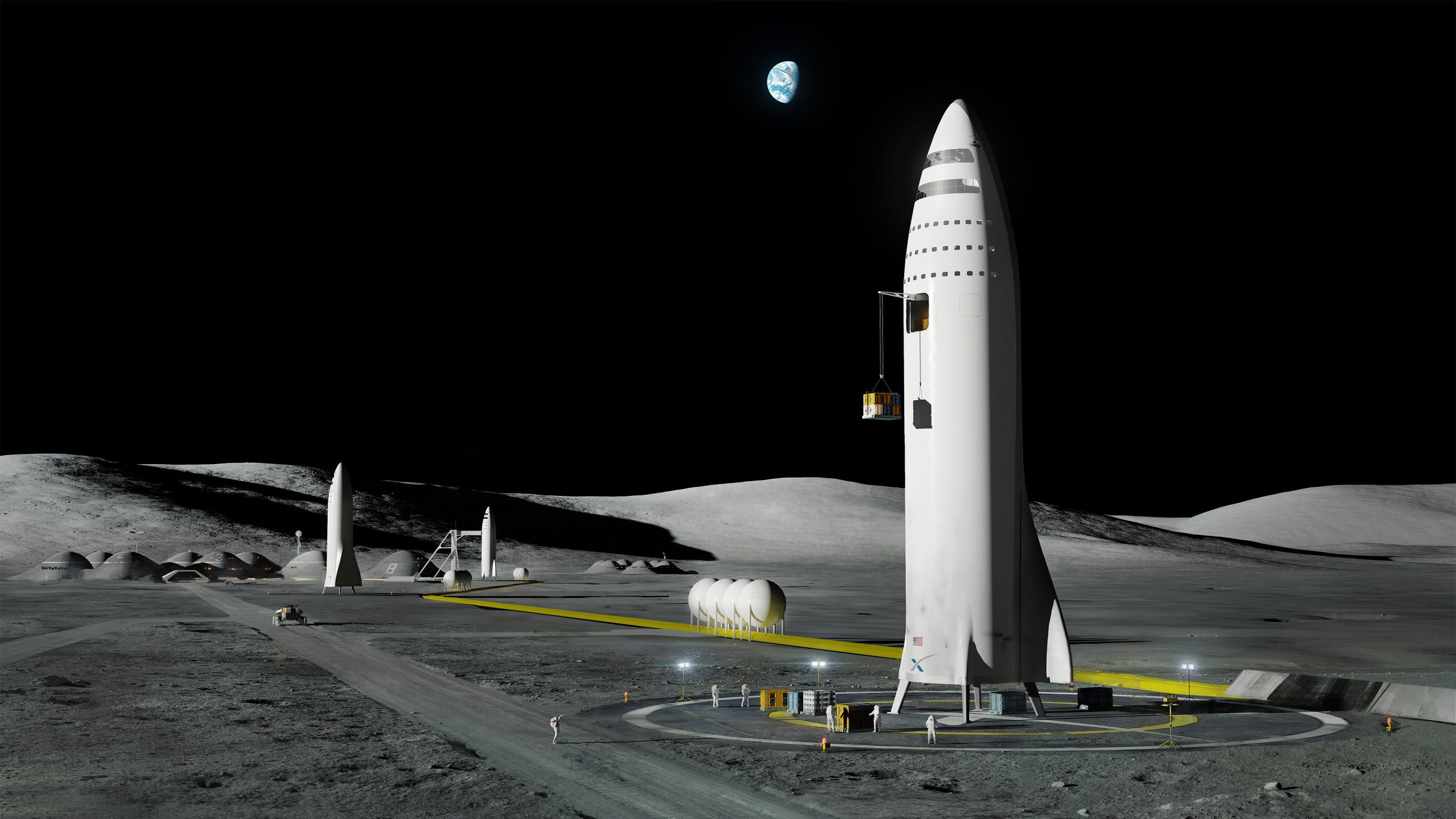
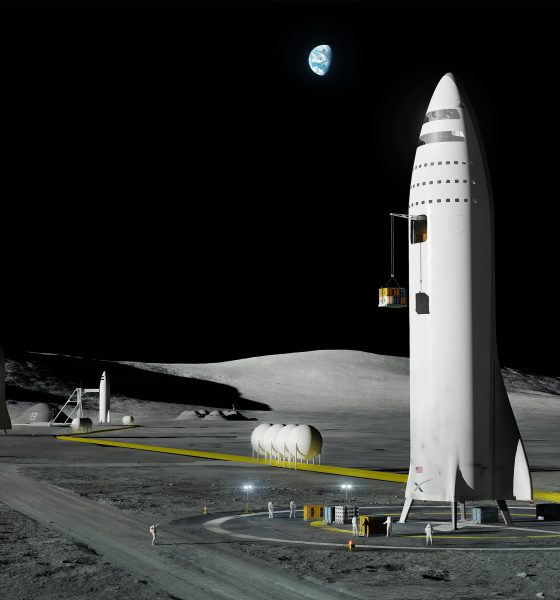
News
NASA head hints that reusable rocket cos. like SpaceX will enable Moon return
In a series of thoroughly unexpected and impassioned introductory remarks at one of several 2018 Advisory Council meetings, NASA administrator Jim Bridenstine bucked at least two decades of norms by all but explicitly stating that reusable rockets built by innovative private companies like SpaceX and Blue Origin will enable the true future of space exploration.
Incredibly, over the course his fascinating hour-long prelude, Bridenstine effectively mentioned NASA’s own SLS rocket and Orion spacecraft – under development for the last decade at a cost of at least several tens of billions of dollars – a total of one time each. Instead, heavily emphasizing the absolute necessity that NASA’s next major human exploration project be sustainable, the administrator spoke at length about the foundational roles that international and domestic space agencies and private companies will need to take on in order to make NASA’s on-paper return to the Moon both real, successful, and useful.
Aside from his arguably brave (but spot-on) decision to all but ignore Boeing and Northrop Grumman’s SLS rocket and Lockheed Martin’s Orion spacecraft over the course of an hour spent speaking about the future of NASA’s human exploration of the Moon and on spaceflight more generally, Bridenstine had nothing but praise for recent successes in the American aerospace industry.
Most notably, he spoke about his belief – at least partially stemming from an executive order requiring it – that the only way NASA can seriously succeed and continue to lead the world in the task of human space exploration is to put an extreme focus on sustainability. Judging from his comments on the matter, the new NASA/Federal buzzword of choice is just a different way to describe hardware reusability, although it certainly leaves wiggle room for more than simply avoiding expendable rocket hardware.
“It’s on me to figure out how to [return to the Moon] sustainably. … And this time, when we go, we’re gonna go to stay. So how do we do go sustainably? Well, [we take] advantage of capabilities that didn’t exist in this country even five or ten years ago. We have commercial companies that can do things that weren’t possible even just a few years ago … to help develop this sustainable [Moon exploration] architecture.” – NASA Administrator Jim Bridenstine, 08/29/2018
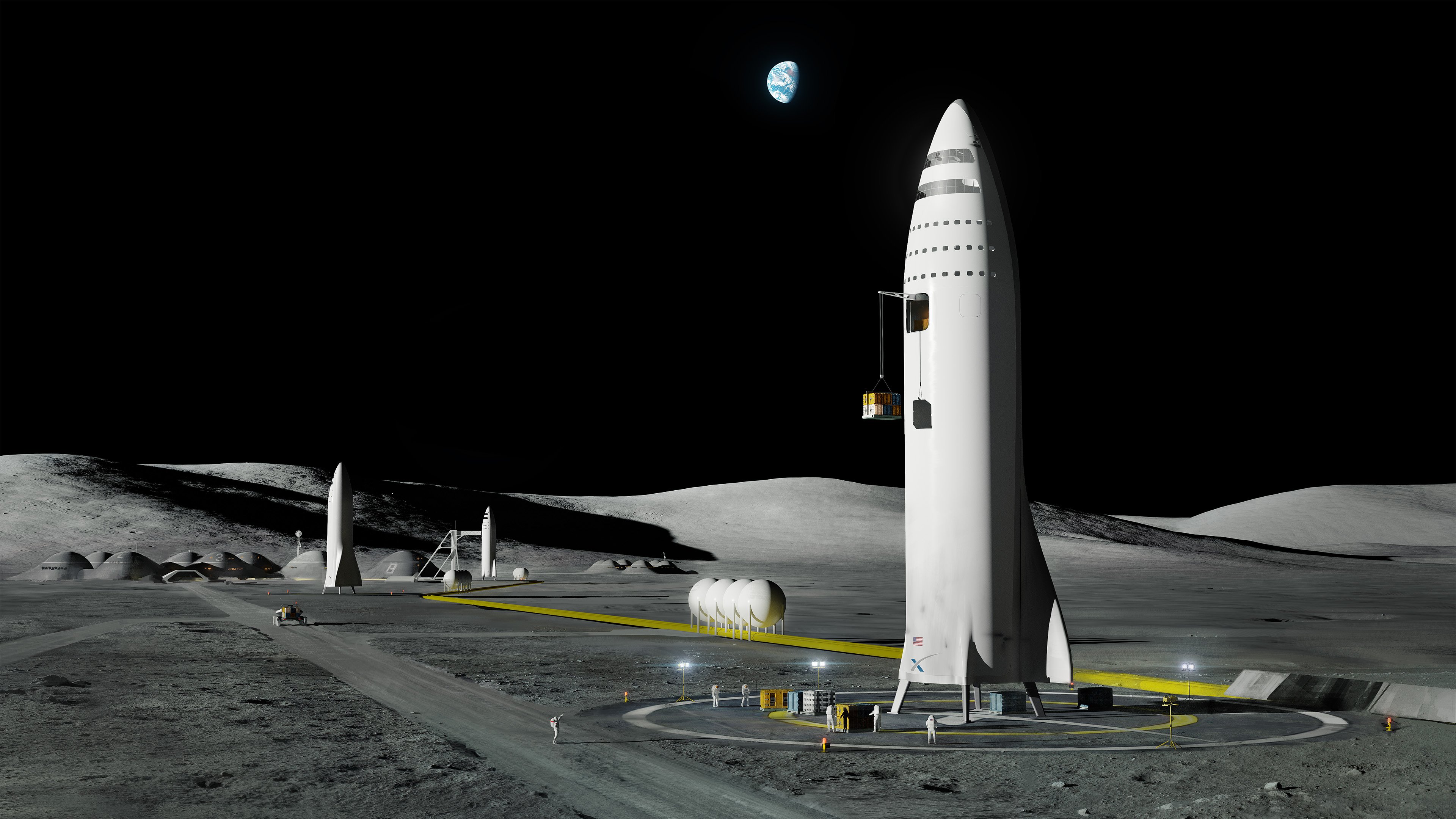
While it might not look like much (aside from a “no duh” statement) to anyone unfamiliar with the trials and tribulations of NASA bureaucracy and politicking, this quote – directed at an audience of senior NASA scientists and managers and independent experts – is absolutely extraordinary in the context of NASA’s history and the formulaic eggshells NASA administrators have traditionally been forced to walk on when discussing American rocketry.
Not only is SLS/Orion utterly and conspicuously absent in a response to the “how” of starting a new wave of lunar exploration, but Bridenstine also almost explicitly names Blue Origin and SpaceX as torchbearers of the sort of exceptional technological innovation that might revolutionize humanity’s relationship with space. By referring specifically to “commercial companies that can do things that weren’t possible even just a few years ago”, the only obvious answers in the context of serious human exploration on and around the Moon are Blue Origin and SpaceX, both of which managed their first commercial rocket landings in late 2015.
Bridenstine went even further still, noting that NASA will need not just reusable rockets for this sustainable lunar exploration, but also reusable orbital tugboats (space tugs) to sustainably ferry both humans and cargo to and from Earth and the Moon and reusable lunar landers capable of many trips back and forth from space stations orbiting the moon. At one point, he even used SpaceX CEO Elon Musk’s (in)famous and well-worn analogy of commercial airlines to emphasize the insanity of not using reusable rockets:
“We have reusable rockets [now]… Imagine if you flew here across the country to [NASA Ames] in a 737 and when the mission was over, you threw the airplane away. How many of you would have flown here?” – NASA Administrator Jim Bridenstine, 08/29/2018
At today's NASA Advisory Council (NAC) meeting, Administrator Jim Bridenstine says the next hop to the moon is going to be sustainable – and will require reusable spaceflight hardware. Uses the same airplane analogy @ElonMusk does when it comes to explaining advantages.
— Emre Kelly (@EmreKelly) August 29, 2018
Reusable rockets lead the charge
It may be generous to include Blue Origin side by side with SpaceX, given the fact that its New Shepard rocket is extremely small and very suborbital, but the company does have eyes specifically set lunar landers and outposts (a project called Blue Moon) and is developing a large and reusable orbital-class rocket (New Glenn) set to debut in the early 2020s.
- Falcon Heavy’s side boosters seconds away from near-simultaneous landings at Landing Zones 1 and 2. (SpaceX)
- We’re not here just yet, but SpaceX is pushing hard to build BFR and get humanity to Mars as quickly as practicable. (SpaceX)
- Blue Origin’s aspirational future, the highly reusable BE-4 powered New Glenn rocket. (Blue Origin)
- Blue Origin’s Blue Moon concept, set to begin experimental lunar landings as early as 2022 or 2023. (Blue Origin)
SpaceX, while focused on Mars colonization, has also expressed a willingness to participate in any sort of lunar exploration that NASA or other international space agencies might have interest in. Currently in the middle of developing its own massive and fully reusable rocket, known as the Big F_____ Rocket (BFR), SpaceX nevertheless already has a flight-tested, highly successfully, and unbeatably cost-effective family of reusable Falcon rockets capable of affordably launching significant mass to the Moon. In fact, both NASA and ESA (European Space Agency) are already seriously considering SpaceX’s Falcon Heavy as the launch vehicle of choice for several critical pieces of a Moon-orbiting space station, expected to launch no earlier than the early to mid-2020s.
Whether or not Bridenstine’s incredible and eloquent statements translate into tangible changes to NASA’s long-term strategy, it’s quite simply refreshing to hear a senior NASA executive – let alone the administrator – speak freely and rationally about the reality of what is needed to enable a truly new era of human spaceflight and exploration.
For prompt updates, on-the-ground perspectives, and unique glimpses of SpaceX’s rocket recovery fleet check out our brand new LaunchPad and LandingZone newsletters!

Elon Musk
Elon Musk’s X will start using a Tesla-like software update strategy
The initiative seems designed to accelerate updates to the social media platform, while maintaining maximum transparency.

Elon Musk’s social media platform X will adopt a Tesla-esque approach to software updates for its algorithm.
The initiative seems designed to accelerate updates to the social media platform, while maintaining maximum transparency.
X’s updates to its updates
As per Musk in a post on X, the social media company will be making a new algorithm to determine what organic and advertising posts are recommended to users. These updates would then be repeated every four weeks.
“We will make the new 𝕏 algorithm, including all code used to determine what organic and advertising posts are recommended to users, open source in 7 days. This will be repeated every 4 weeks, with comprehensive developer notes, to help you understand what changed,” Musk wrote in his post.
The initiative somewhat mirrors Tesla’s over-the-air update model, where vehicle software is regularly refined and pushed to users with detailed release notes. This should allow users to better understand the details of X’s every update and foster a healthy feedback loop for the social media platform.
xAI and X
X, formerly Twitter, has been acquired by Elon Musk’s artificial intelligence startup, xAI last year. Since then, xAI has seen a rapid rise in valuation. Following the company’s the company’s upsized $20 billion Series E funding round, estimates now suggest that xAI is worth tens about $230 to $235 billion. That’s several times larger than Tesla when Elon Musk received his controversial 2018 CEO Performance Award.
As per xAI, the Series E funding round attracted a diverse group of investors, including Valor Equity Partners, Stepstone Group, Fidelity Management & Research Company, Qatar Investment Authority, MGX, and Baron Capital Group, among others. Strategic partners NVIDIA and Cisco Investments also continued support for building the world’s largest GPU clusters.
News
Tesla FSD Supervised wins MotorTrend’s Best Driver Assistance Award
The decision marks a notable reversal for the publication from prior years, with judges citing major real-world improvements that pushed Tesla’s latest FSD software ahead of every competing ADAS system.

Tesla’s Full Self-Driving (Supervised) system has been named the best driver-assistance technology on the market, earning top honors at the 2026 MotorTrend Best Tech Awards.
The decision marks a notable reversal for the publication from prior years, with judges citing major real-world improvements that pushed Tesla’s latest FSD software ahead of every competing ADAS system. And it wasn’t even close.
MotorTrend reverses course
MotorTrend awarded Tesla FSD (Supervised) its 2026 Best Tech Driver Assistance title after extensive testing of the latest v14 software. The publication acknowledged that it had previously criticized earlier versions of FSD for erratic behavior and near-miss incidents, ultimately favoring rivals such as GM’s Super Cruise in earlier evaluations.
According to MotorTrend, the newest iteration of FSD resolved many of those shortcomings. Testers said v14 showed far smoother behavior in complex urban scenarios, including unprotected left turns, traffic circles, emergency vehicles, and dense city streets. While the system still requires constant driver supervision, judges concluded that no other advanced driver-assistance system currently matches its breadth of capability.
Unlike rival systems that rely on combinations of cameras, radar, lidar, and mapped highways, Tesla’s FSD operates using a camera-only approach and is capable of driving on city streets, rural roads, and freeways. MotorTrend stated that pure utility, the ability to handle nearly all road types, ultimately separated FSD from competitors like Ford BlueCruise, GM Super Cruise, and BMW’s Highway Assistant.
High cost and high capability
MotorTrend also addressed FSD’s pricing, which remains significantly higher than rival systems. Tesla currently charges $8,000 for a one-time purchase or $99 per month for a subscription, compared with far lower upfront and subscription costs from other automakers. The publication noted that the premium is justified given FSD’s unmatched scope and continuous software evolution.
Safety remained a central focus of the evaluation. While testers reported collision-free operation over thousands of miles, they noted ongoing concerns around FSD’s configurable driving modes, including options that allow aggressive driving and speeds beyond posted limits. MotorTrend emphasized that, like all Level 2 systems, FSD still depends on a fully attentive human driver at all times.
Despite those caveats, the publication concluded that Tesla’s rapid software progress fundamentally reshaped the competitive landscape. For drivers seeking the most capable hands-on driver-assistance system available today, MotorTrend concluded Tesla FSD (Supervised) now stands alone at the top.
News
Elon Musk’s Grokipedia surges to 5.6M articles, almost 79% of English Wikipedia
The explosive growth marks a major milestone for the AI-powered online encyclopedia, which was launched by Elon Musk’s xAI just months ago.

Elon Musk’s Grokipedia has grown to an impressive 5,615,201 articles as of today, closing in on 79% of the English Wikipedia’s current total of 7,119,376 articles.
The explosive growth marks a major milestone for the AI-powered online encyclopedia, which was launched by Elon Musk’s xAI just months ago. Needless to say, it would only be a matter of time before Grokipedia exceeds English Wikipedia in sheer volume.
Grokipedia’s rapid growth
xAI’s vision for Grokipedia emphasizes neutrality, while Grok’s reasoning capabilities allow for fast drafting and fact-checking. When Elon Musk announced the initiative in late September 2025, he noted that Grokipedia would be an improvement to Wikipedia because it would be designed to avoid bias.
At the time, Musk noted that Grokipedia “is a necessary step towards the xAI goal of understanding the Universe.”
Grokipedia was launched in late October, and while xAI was careful to list it only as Version 0.1 at the time, the online encyclopedia immediately earned praise. Wikipedia co-founder Larry Sanger highlighted the project’s innovative approach, noting how it leverages AI to fill knowledge gaps and enable rapid updates. Netizens also observed how Grokipedia tends to present articles in a more objective manner compared to Wikipedia, which is edited by humans.
Elon Musk’s ambitious plans
With 5,615,201 total articles, Grokipedia has now grown to almost 79% of English Wikipedia’s article base. This is incredibly quick, though Grokipedia remains text-only for now. xAI, for its part, has now updated the online encyclopedia’s iteration to v0.2.
Elon Musk has shared bold ideas for Grokipedia, including sending a record of the entire knowledge base to space as part of xAI’s mission to preserve and expand human understanding. At some point, Musk stated that Grokipedia will be renamed to Encyclopedia Galactica, and it will be sent to the cosmos.
“When Grokipedia is good enough (long way to go), we will change the name to Encyclopedia Galactica. It will be an open source distillation of all knowledge, including audio, images and video. Join xAI to help build the sci-fi version of the Library of Alexandria!” Musk wrote, adding in a later post that “Copies will be etched in stone and sent to the Moon, Mars and beyond. This time, it will not be lost.”
